It’s rare to see a red rainbow. I’ve seen only one in all my decades of skywatching … although, I admit, I live in a place where it doesn’t rain much. I spotted my sole red rainbow early one morning decades ago, around sunup, while driving on the dirt road leading from Chaco Canyon in New Mexico. That is such a magical place, and I fancied at the time that the magic of the canyon helped create the red rainbow. Not so.
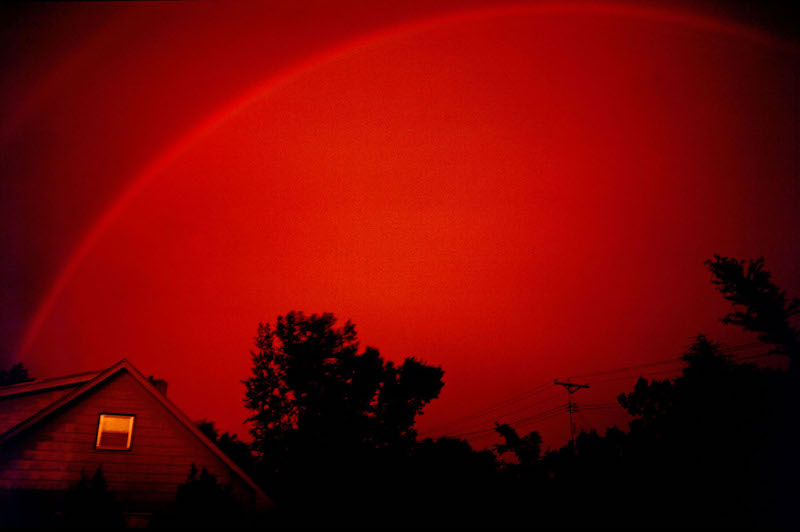
What makes a red rainbow?
Les Cowley of the great website Atmospheric Optics says that red rainbows are created when there is a low sun so that, he says, the blue and green of its rays are weakened by scattering during the long journey through the atmosphere. In that way, red rainbows are akin to red sunrises and sunsets. Les explained:
Sunset and sunrise rays travel long paths through the lower atmosphere where they are scattered by air molecules and dust. Short wavelength blues and greens are scattered most strongly leaving the remaining transmitted light proportionately richer in reds and yellows.
The result, glorious sunsets and red rainbows.
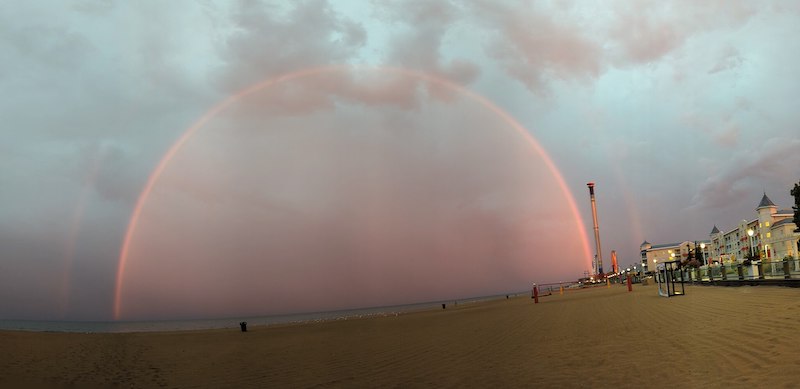
Comparing rainbows
In 2014, astrophotographer Göran Strand of Sweden kindly gave us permission to publish the photo below, which shows a double rainbow, followed by the same double rainbow seen as red, as the sun sank low in the sky. In fact, it illustrates how red rainbows are made. Göran told Earthsky that he shot the first image in the afternoon, with the sun about 27 degrees above the horizon. He shot the red rainbow photo with the sun 2 degrees above the horizon.
Notice two things in the photo below. First, notice their colors. And then also … notice the heights of the two rainbows above the horizon. For all rainbows, the lower the sun, the higher the rainbow. So the red rainbow (created by an exceedingly low sun) arcs high in the sky, while the multi-colored rainbow (created by a higher sun) arcs low.
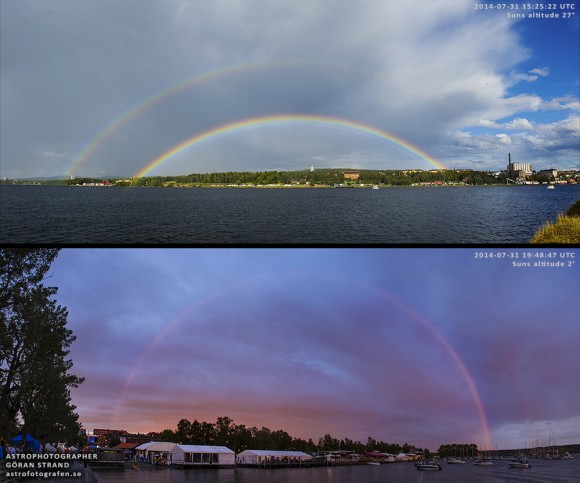
Double rainbows and multi-colored rainbows
By the way, are you interested in what makes double rainbows, and regular multi-colored rainbows? All rainbows happen when sunlight shines through raindrops. If the sun is behind you, and if you see the sun sunlight emerging from many raindrops at once, you see a mosaic of light spread out in an arc in the sky. Thus, a rainbow. And double rainbows happen when sunlight inside a raindrop is reflected twice instead of once.
Here are more photos of red rainbows. Thank you all!

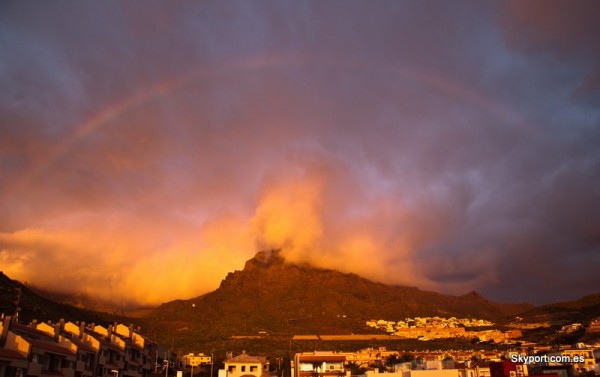
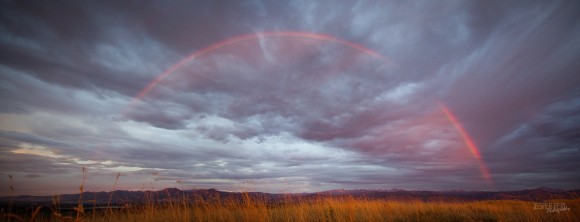
Bottom line: If you’re watching a sunset, and there’s rain in the air, turn in the direction opposite the sun and watch for the elusive red rainbow. Red rainbows happen when the sun is low on the horizon. So, they’re created for much the same reason that a sunset or sunrise looks red. When the sun is low, its blue and green light is weakened by scattering during the long journey to your eyes through Earth’s atmosphere. Thus, the red light travels through more directly. Voila … a red rainbow.











